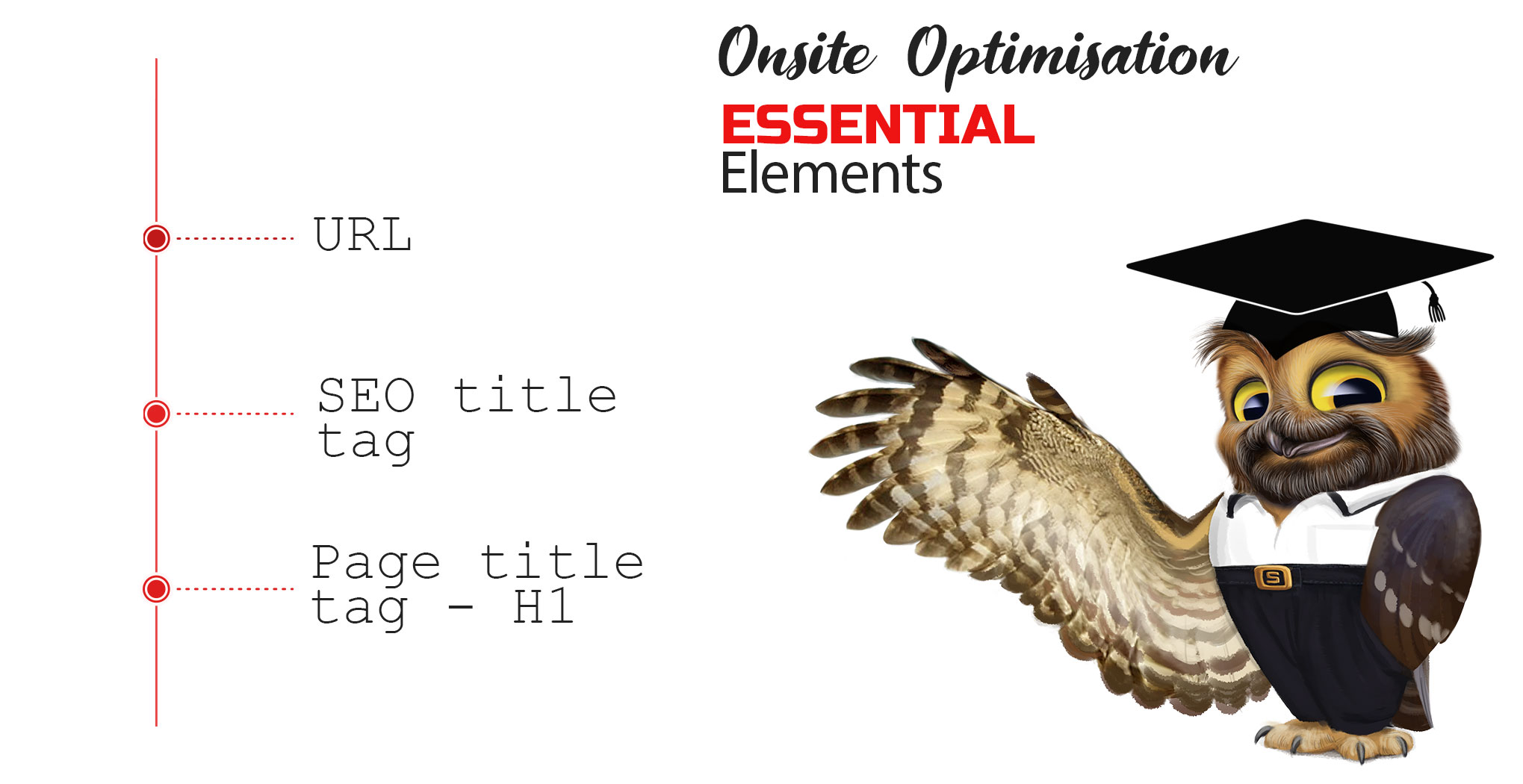Onsite Optimisation involves all of the elements on your website which will be crawled and indexed by Google.
1. Meta Description: Meta descriptions are not specifically used to improve your SEO, but they do help to boost your chances of having people click through to your page by providing them with a concise and correct explanation on what your website can offer them.
2. Correct URL: Google uses URL structure as a ranking factor so having the right keywords in the URL of each page is important to ensure it shows up in the relevant searches, especially if you have multiple products and/or services that have their own unique pages.
3. Page title - H1: H1 header tags are important. However, it is also important to understand how they are used and know how H1 – and other tags (H2, H3, H4, etc.) – fit into the overall user experience of that page and the website as a whole. It used to be a rule that page should have one H1 tag only. It is not the case any more. “Your site is going to rank perfectly with no H1 tags or with five H1 tags,” Mueller said in late 2019. Mueller cited three ways Google’s system works to understand page headers and how they support a page:
- One H1 heading.
- Multiple H1 headings.
- Styled pieces of text (without semantic HTML).
Saying this, it is still good practice to use the great structure of the pages.
Think of the semantic structure of a page in a simple way:
- Main header (could be an H1).
- Subhead 1 (could be an H2).
- Subhead 2 (could be another H2).
- Secondary subhead 1 (could be an H3).
- Secondary subhead 2 (could be an H3).
- Subhead 3 (could be another H2).
- Secondary subhead 1 (could be an H3).
- Secondary subhead 2 (could be an H3).

